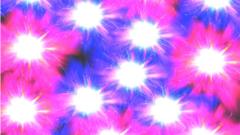15 minutes ago
About sharing
Some physicists have long suspected that mysterious ‘ghost’ particles in the world around us could greatly advance our understanding of the true nature of the Universe.
Now scientists think they’ve found a way to prove whether or not they exist.
Europe’s centre for particle research, Cern, has approved an experiment designed to find evidence for them.
The new instrument will be a thousand times more sensitive to such particles than previous devices.
It will smash particles into a hard surface to detect them instead of against each other like Cern’s main device the Large Hadron Collider (LHC).
So what are these ghostly particles and why was a new approach needed to detect them?
The current theory of particle physics is called the Standard Model.
It says that everything in the Universe is made up of a family of 17 particles – well known ones such as the electron and the Higgs boson – as well as the lesser known but wonderfully named charm quark, tau neutrino and gluon.
Some are mixed up in different combinations to make up the larger, but still incredibly small, particles that make up the world around us, as well as the stars and galaxies we see in space, while others are involved in the forces of nature.
But there’s a problem: astronomers have noticed things in the heavens – the way galaxies move, for example – that strongly suggest that all that we can observe makes up just five per cent of the Universe.
Some, or even all the rest of the Universe, could be made up of the ‘ghost’ or ‘hidden’ particles. They are thought to be phantom doppelgangers of the 17 particles of the Standard Model.
If they exist, they are really hard to detect because they very rarely interact with the world we know. Like ghosts, they pass straight through everything, and can’t be detected by any earthly device.
But the theory is that the ghost particles can disintegrate into Standard Model particles, and these can be picked up by detectors.
Instead of colliding particles together, which most current experiments do, the Search for Hidden Particles (SHiP) will crash them into a big block of material. This means that all the particles are smashed into smaller bits – rather than some of them. The diagram below shows why this ‘fixed target’ approach is so much more effective.
The project’s ghostbuster-in-chief, Prof Andrey Golutvin of Imperial College London said that the experiment “marks a new era in the search for hidden particles”.
“SHiP has the unique possibility to solve several of the major problems of particle physics, and we have the prospect of discovering particles that have never been seen before,” he said.
The hunt for ghost particles requires specially adapted equipment.
With normal experiments, using the Large Hadron Collider, for example, new particles can be detected up to a metre from the collision. But the ghost particles can remain invisible and travel several tens or even hundreds of meters before they disintegrate and reveal themselves. So SHiP’s detectors are placed much further away.
‘We are explorers’
Prof Mitesh Patel of Imperial College described the new approach as “ingenious”.
“What really appeals to me about the experiment is that these particles are right under our noses, but we have never been able to see them because of the way they interact, or rather the way they don’t interact.
“We are explorers, and we believe that we can see something interesting in this new terrain. So, we have to take a look.”
SHiP will be built within existing facilities at Cern, according to Dr Claudia Ahdida, a physicist at Cern.
“We will be making use of an existing cavern and infrastructure and parts that we will try and re-use as much as possible and what we will have is a facility that will help us search for this hidden sector, which has not been seen before,” she said.
SHiP will run alongside all of Cern’s other experiments, the largest of which is the Large Hadron Collider, which has been searching for the missing 95% of the Universe since it was completed in 2008 at a cost of £3.75bn. So far it hasn’t found any non-Standard Model particles, and so the plan is to build a machine that is three times larger and much more powerful.
The Future Circular Collider has an estimated initial cost of £12bn. Its planned start date is sometime in the mid-2040s, though it won’t be at its full new particle-hunting potential until 2070.
By contrast, the SHiP experiment is scheduled to start looking for new particles in 2030 and will be around a hundred times cheaper at around £100m. But researchers say that all approaches are needed to explore all the possible options in order to find the particles that they say would lead to one of the biggest breakthroughs in physics of all time.
Follow Pallab on X, formerly known as Twitter.
Pallab Ghosh and Kate Stephens go inside the biggest particle accelerator in the world to find out why scientists want an even larger one.
Related Topics
5 February
10 August 2023
